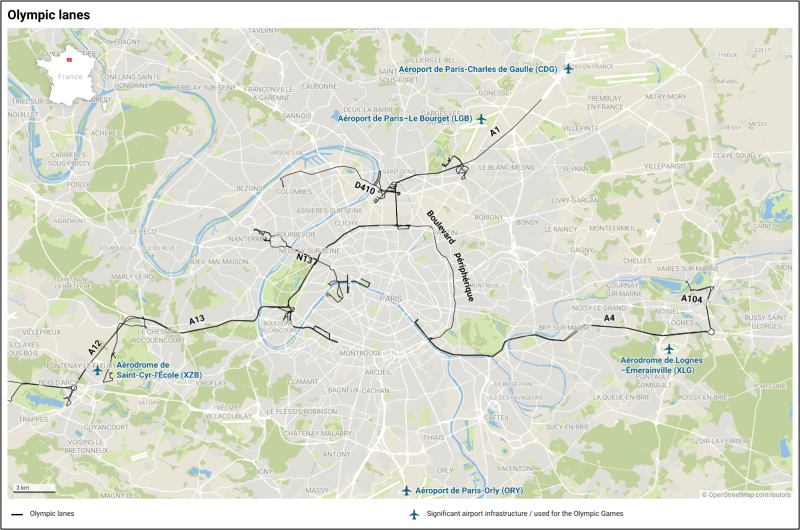Security Perimeters & Logistical Constrains
With the Paris Games just two months away, organizations' key concerns are maintaining business operations and ensuring staff mobility amidst the logistical challenges posed by the event. In this article, we will cover the security perimeters, logistical constraints, and our corresponding recommendations for the event.
The Government Platform Goes Live
On 10 May, the Prefecture de Police launched its registration platform, allowing users to obtain an individual digital pass, known as the Games Pass ("Pass Jeux"). This QR code grants access to the grey perimeter set up ahead of the opening ceremony (from 18-26 July), as well as to the red perimeter before and during the Games. Registration for the Games Pass for the grey perimeter of the opening ceremony has been open since 13 May. Applications for motorised vehicle passes to access the red perimeter around the competition venues will be available at a later date through a separate procedure on the same platform.
From 18-26 July (until 13:00 local time) – Prior to the opening ceremony
Two perimeters will be set up for this major event:
- Grey perimeter: in the immediate vicinity of the river Seine - it will be in effect from 18 July to 26 July until 13:00 and will require a digital pass for access. Residents, pedestrians, tourists, professionals, and cyclists will be allowed to circulate upon presentation of the Games Pass and an identification document. Motorised vehicles are prohibited, except in rare cases. An interactive map is available to check whether an address lies within this grey perimeter.
- Red perimeter: free movement of pedestrians and cyclists, no motorised vehicles allowed, except for rare exceptions; does not require the Games Pass (at this stage).
On 26 July (from 13:00) – The opening ceremony
- Grey Perimeter: becomes authorized only for spectators with a ticket or credentialed access and to pedestrians and cyclists with a Games Pass. Only emergency vehicles will be allowed.
- Red perimeter: free movement of pedestrians and cyclists, no motorised vehicles authorized, except for very rare exemptions.
As for public transport, RER and metro stations serving locations within these perimeters will be closed. As for buses, some routes crossing within the two perimeters will be diverted unless an exemption is granted. On the day of the opening ceremony, no buses will be allowed to circulate within these perimeters.
From 26 July to 8 September – Competition site perimeters
For the sporting events, new perimeters will be set up to ensure the security of participants, visitors, and residents.
- Blue perimeter: accessible to pedestrians, cyclists, and motorised vehicles with a legitimate reason (free justification); checks are not systematic in this area. This perimeter is under the responsibility of the State.
- Red perimeter: accessible to pedestrians and cyclists. Motorised vehicles are prohibited, except in the case of exemptions and a Games Pass. Checks are systematic. This perimeter is under the responsibility of the State.
- Black perimeter – SILT (Internal Security and Counterterrorism): protective perimeter where people and personal belongings entering the competition site are searched. It is under the responsibility of the State.
- Grey perimeter: Competition sites – athletes, spectators with tickets and Paris 2024 accredited persons are allowed; no vehicles authorized, except Paris 2024 vehicles. It is under the responsibility of Paris 2024.
The blue and red perimeters are activated each day, 2 hours and 30 minutes before the start of the first competition, and are lifted 1 hour after the end of the last competition.

Road events, such as the marathon and cycling, will have special and adapted perimeters.


